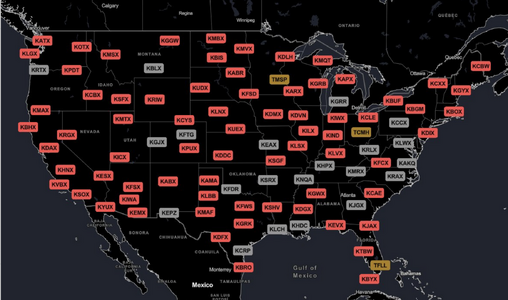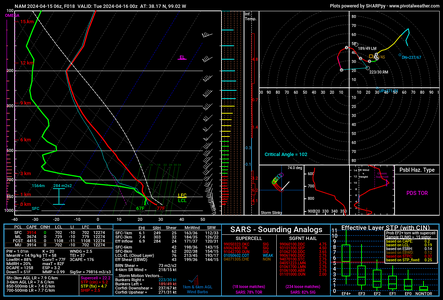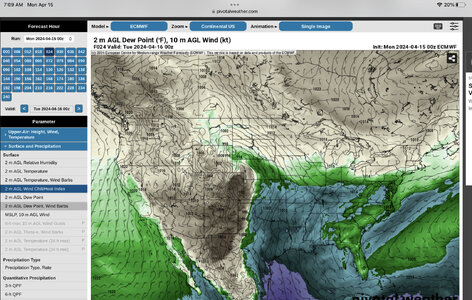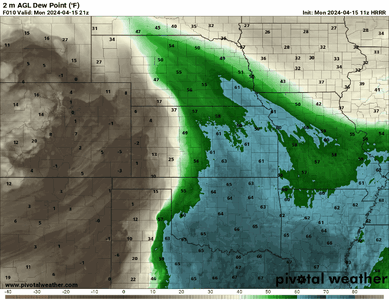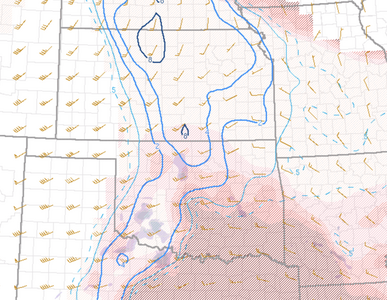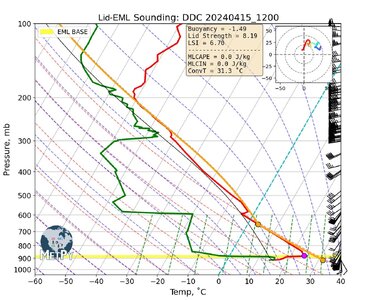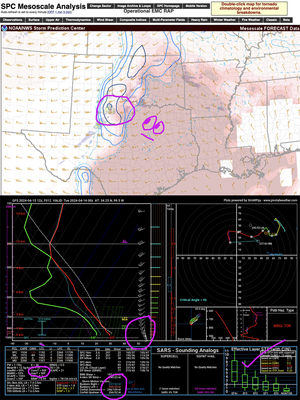Mike Smith
EF5
As I know some people do not have access to this, here are the 18Z ECMWF's lightning forecasts from 5pm Monday to 11pm at 2-hour intervals.
The storm that develops near Pratt at 5p moves NNE and intensifies until it hits the warm front two hours later.
The dry line finally begins erupting around 9 and is going full blast at 11 with two possible cells ahead of the line.
Just in: the new Nadocast is quite interesting:
Finally, here is the new (10:40pm HREF from SPC, at far right).
The storm that develops near Pratt at 5p moves NNE and intensifies until it hits the warm front two hours later.
The dry line finally begins erupting around 9 and is going full blast at 11 with two possible cells ahead of the line.
Just in: the new Nadocast is quite interesting:
Finally, here is the new (10:40pm HREF from SPC, at far right).
Attachments
-
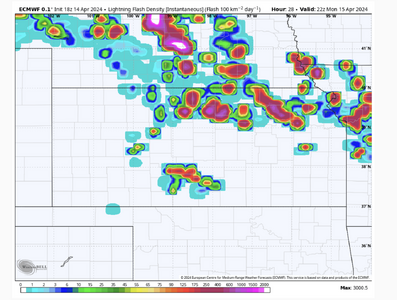 Screenshot 2024-04-14 at 10.22.35 PM.png823.9 KB · Views: 13
Screenshot 2024-04-14 at 10.22.35 PM.png823.9 KB · Views: 13 -
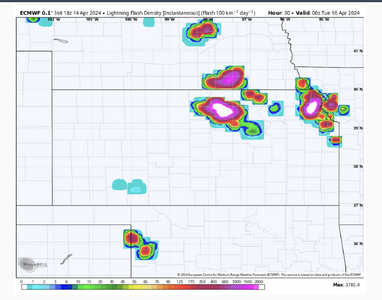 Screenshot 2024-04-14 at 10.22.47 PM.png537.3 KB · Views: 12
Screenshot 2024-04-14 at 10.22.47 PM.png537.3 KB · Views: 12 -
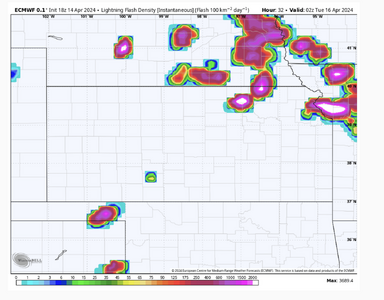 Screenshot 2024-04-14 at 10.22.58 PM.png593.8 KB · Views: 10
Screenshot 2024-04-14 at 10.22.58 PM.png593.8 KB · Views: 10 -
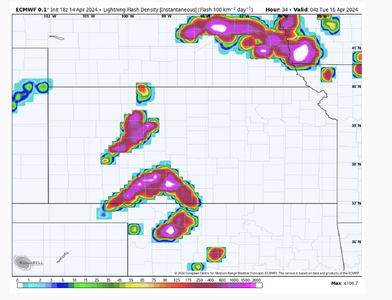 Screenshot 2024-04-14 at 10.23.06 PM.png664.8 KB · Views: 12
Screenshot 2024-04-14 at 10.23.06 PM.png664.8 KB · Views: 12 -
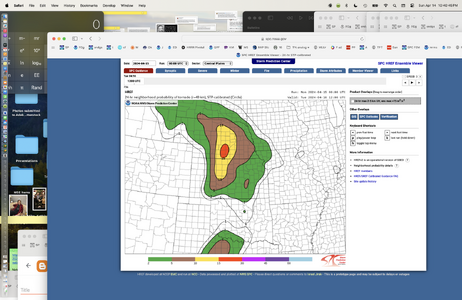 Screenshot 2024-04-14 at 10.40.45 PM.png992.6 KB · Views: 35
Screenshot 2024-04-14 at 10.40.45 PM.png992.6 KB · Views: 35

